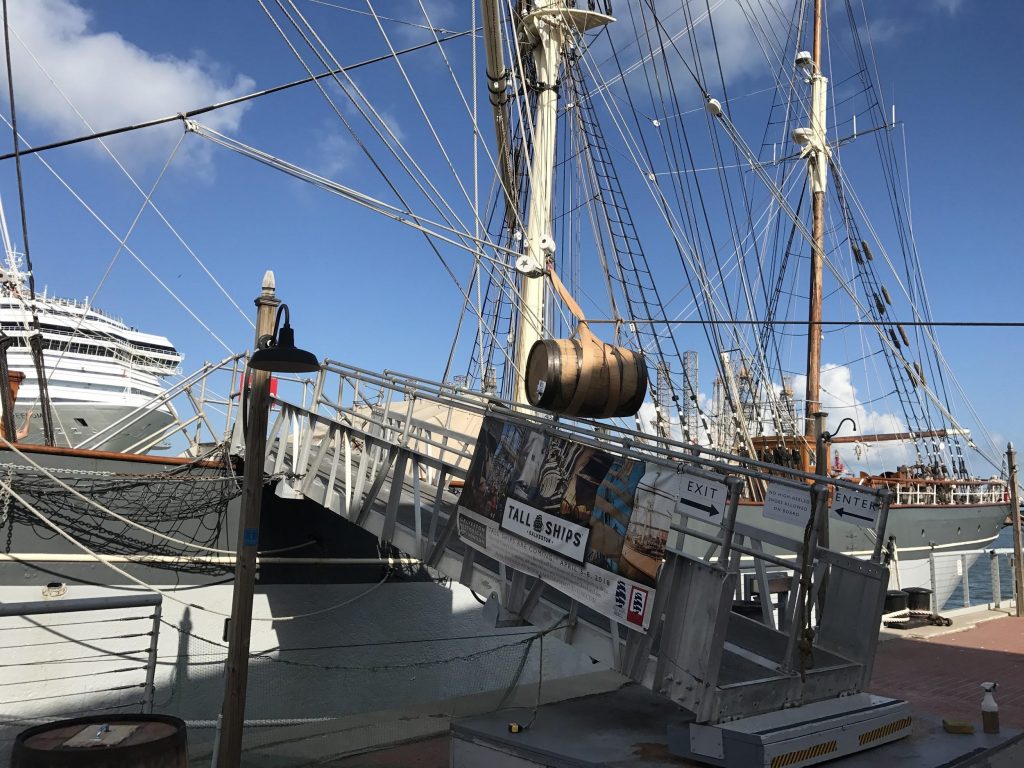As the semester draws to an end, many are perhaps wondering about our research status. Research assistant, Emelie Nelson, shares our newest results and progress in this post.
What were 17th-Century Sailors actually eating? How did their diet affect their health?
by Emelie Nelson
These two important questions serve as the basis for “Ship Biscuit and Salted Beef Research Project.” To answer these questions, a two-month sea voyage simulation was conducted. All food and beverage items were handmade, following 17th-century recipes.
Beginning in August 2017, barrels of wine, water, salted beef, salted cod, and biscuits were loaded into the iron hull of Elissa in Galveston, Texas. These barrels remained on the ship for approximately two months (even through the tumultuous Hurricane Harvey). Contrary to what one may initially expect, Hurricane Harvey ironically contributed to the accuracy of the simulation because the simulation was modeled after Warwick, a ship that sunk in a hurricane off the coast of Bermuda.
Every few days, members of the team retrieved samples from the barrels to test for bacterial growth and to perform nutritional analysis.
Why is this relevant, you might ask?
It has been hypothesized that exposure to pathogens, such as in the case of 17th century sailors, may strengthen the human immune system. This idea is known as the Hygiene Hypothesis. If “Ship Biscuit and Salted Beef Research Project” can identify the types of pathogens that 17th century sailors most likely encountered in their diet, the results of the investigation can be used to better understand the Hygiene Hypothesis.
Furthermore, present-day safety measures that help to ensure the safety of our food not only kill the bad bacteria (ie. pathogens) that make us sick but also the good bacteria (ie. probiotics) that keep our guts healthy. Therefore, if “Ship Biscuit and Salted Beef Research Project” can also identify the good bacteria present in the diet of 17th Century Sailors (prior to modern food and safety regulations) we can potentially put them back into our diet! Pretty cool, huh?
 What does this mean for our project going forward?
What does this mean for our project going forward?
In the upcoming months, our project will attempt to isolate the probiotics that are present in our samples and perform genomic sequencing. We will be using techniques such as PCR, gel electrophoresis, and 16S rRNA sequencing. To read more about probiotics and their importance, visit: https://nccih.nih.gov/health/probiotics/introduction.htm.


